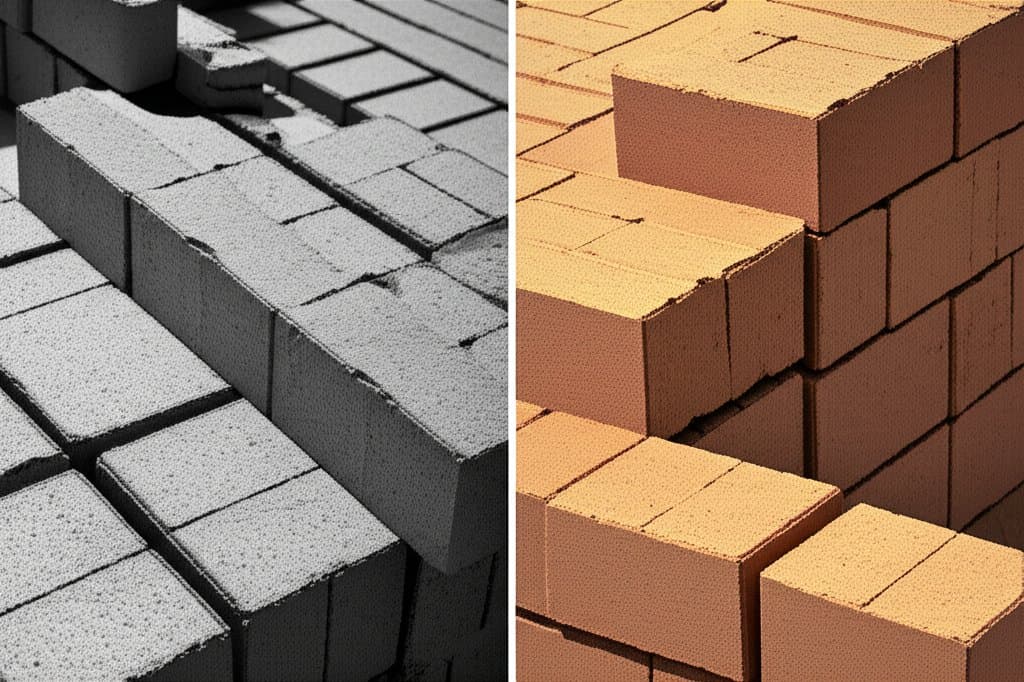The Rise of Geopolymer Bricks in 2025 Construction
The construction sector depends heavily on cement-based materials, yet innovative alternatives promise to alter this reliance. Geopolymer bricks stand out as a superior choice, blending remarkable strength with environmental benefits and economic advantages. These bricks utilize industrial by-products to create durable structures that endure longer and demand less maintenance. Builders and homeowners alike benefit from this shift toward more sustainable practices.
Geopolymer technology activates aluminosilicate materials through alkali solutions, forming a binder that mimics cement's properties without the high carbon footprint. Production involves heating precursors to specific temperatures, followed by mixing and molding. The result yields bricks that resist weathering, fire, and chemical exposure better than standard options. As global regulations tighten on emissions, adoption accelerates, positioning geopolymer bricks as the material of choice for forward-thinking projects.
Essential Advantages
Geopolymer bricks deliver multiple benefits that address key industry challenges:
- Rapid Curing Process: Bricks achieve operational strength in 24 to 48 hours, compared to the 7 to 28 days required for cement, allowing projects to progress swiftly and reducing on-site delays.
- Superior Compressive Strength: With ratings from 6,000 to 9,000 PSI, these bricks outperform typical concrete units, supporting heavier loads and taller structures without additional reinforcement.
- Enhanced Thermal Efficiency: Low thermal conductivity leads to 30 percent savings in heating and cooling costs, making buildings more energy-efficient year-round.
- Environmental Impact: Manufacturing emits up to 80 percent less carbon dioxide than cement production, aligning with green building standards and reducing overall project footprints.
- Cost Breakdown: Installation ranges from $8 to $12 per square foot, with materials accounting for 60 percent, labor 30 percent, and equipment 10 percent; long-term savings arise from durability and minimal upkeep.
These attributes make geopolymer bricks ideal for diverse applications, from residential homes to commercial complexes.
Preparing for a Geopolymer Masonry Project
Successful implementation begins with thorough preparation to ensure compliance and optimal results.
Navigating Permits and Building Codes
Contact local authorities to confirm that geopolymer masonry complies with regulations for innovative materials. Provide test data on compressive strength, fire ratings, and load capacities to secure approvals. In regions with established green codes, these bricks often qualify for incentives or streamlined permitting.
Selecting the Right Materials
Tailor choices to environmental conditions and project needs:
- Fly Ash Variants: Suited to arid or hot regions, these offer outstanding heat resistance and utilize power plant waste effectively.
- Slag-Based Options: Perform well in salty or moist environments, resisting corrosion and extending service life in coastal settings.
- Metakaolin Formulations: Deliver maximum strength for critical load-bearing elements, such as foundations or high-rise walls.
Source materials from certified suppliers to guarantee consistency and quality.
Budgeting and Procurement
Unit costs may exceed those of cement blocks initially, yet overall expenses decrease through faster timelines and lower maintenance. Factor in regional availability of by-products like fly ash, which affects supply and pricing. Bulk purchases from industrial partners can further optimize costs.
Detailed Installation Guide
Follow these steps to construct reliable geopolymer walls with precision.
1. Establishing the Base Layer
Prepare a flat, debris-free foundation. Apply a specialized geopolymer mortar or thin-set adhesive designed for these bricks. Use a chalk line for alignment and verify levelness after every three rows to maintain stability.
2. Constructing the Wall Structure
Stack bricks in a running bond layout to distribute stress evenly. Keep joints uniform at 3 to 5 millimeters thick for solid bonding. Wipe away surplus mortar promptly to avoid discoloration and ensure a clean appearance.
3. Incorporating Supports and Openings
Add horizontal rebar every fourth row in walls over 8 feet tall to bolster seismic resistance. For door and window frames, employ lintel blocks or pour custom geopolymer beams to handle overhead pressures without compromise.
4. Applying Final Finishes
After reaching the desired height, coat surfaces with permeable paints or lime plasters that allow vapor escape. These bricks bond well with standard finishes, eliminating the need for primers, though steer clear of sealants that could retain dampness.
Addressing Potential Issues
Anticipate and resolve common hurdles to achieve flawless outcomes.
- Color Inconsistencies: Arise from fluctuating curing environments; control temperature and humidity to uniform levels throughout the process.
- Efflorescence Deposits: Salt residues appear as white films; dissolve them using a diluted vinegar wash followed by rinsing.
- Joint Weaknesses: Stem from improper mix ratios or water excess; verify activator proportions and apply mortar sparingly.
- Crack Formation: Superficial fissures occur occasionally, but ongoing splits signal curing errors; monitor and adjust environmental controls accordingly.
Prompt intervention prevents minor problems from escalating.
Ensuring Durability Through Maintenance
Geopolymer structures demand little ongoing care to sustain performance. Conduct yearly inspections for joint deterioration beyond 0.25 inch, cracks wider than 1/16 inch, or water penetration signs. Clean exteriors with a gentle soap solution, and repoint eroded areas as needed to preserve integrity.
Avoid harsh chemicals that could degrade the material. With proper attention, these walls maintain appearance and function for decades, far outlasting traditional alternatives.
Choosing Between DIY and Professional Approaches
Experienced individuals can manage modest projects like retaining walls or outbuildings, potentially saving 25 percent on labor costs. Acquire bricks and tools from local outlets, and follow manufacturer guidelines closely. For load-bearing or extensive builds, engage certified professionals who specialize in geopolymer applications. They supply necessary certifications and ensure adherence to safety standards.
Advancing Sustainable Construction Practices
Integrating geopolymer bricks elevates project quality while cutting environmental harm. Shorter build times free resources for innovation, and inherent efficiencies lower operational expenses. As infrastructure evolves and awareness grows, this material transitions from niche to essential, fostering a greener built environment for generations ahead.
